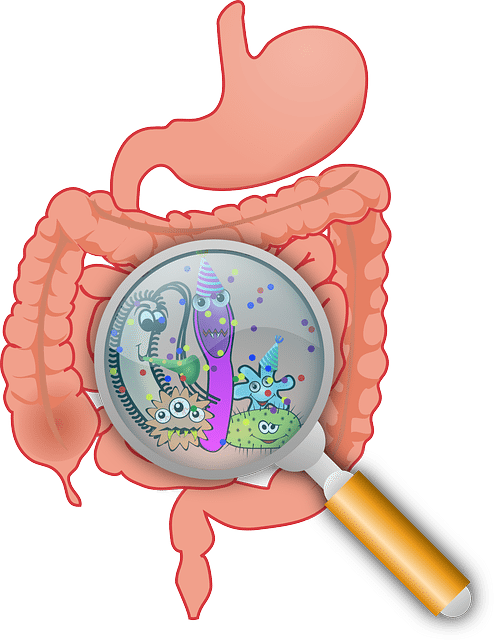
10 Reasons Your Digestion’s Derailed – a Natural Perspective from a Personal Trainer in Dallas

1. Lack of vitamin cofactors for enzyme production – That’s right, some vitamins serve as cofactors necessary in the production of enzymes. If you are low on vitamins, your body will not be able to efficiently produce the enzymes you so desperately need. Without proper enzyme production, good luck experiencing efficient digestion.
2. Acidic diet fueling growth of candida – Candida is a yeast bacteria that is unfortunately quite alive and well, thriving right within the vast majority of us. It craves acidic environments in which to live, and rudely crowds out the good bacteria needed for proper digestion. So what’s acid forming? Dairy, refined sugar, caffeine, alcohol, soft drinks, corn syrup, OTC drugs, pharmaceutical drugs, just to name a few.
3. Overuse of antibiotics, killing the helpful bacteria – It’s quite entertaining how much we fear bacteria. The fact is, our body is quite capable of properly disposing of harmful bacteria … when we keep our internal environment properly balanced. Killing all those tiny friends in your digestive tract, who work so incredibly hard for your good, is not the way to stay balanced and help your digestion.
4. Use of proton-pump inhibitors and the lack of hydrochloric acid – Knee-jerk reactions usually aren’t the best decisions, and often end in regret. Case in point: the taking of pharmaceutical drugs that block production of hydrochloric acid. Now, I don’t have the esteemed “Dr” letters in front of my name, but I’m pretty sure God designed our bodies to produce HCL for a reason…oh yeah, the digestion of protein…and…the absorption of calcium. Add to the aforementioned regret: PPI’s are likely to increase your risk of fractures and osteoporosis. Popular PPI’s? Aciphex, Dexilant, Nexium, Prevacid, Prilosec and Protonix.
5. Too much food compared to available enzymes and digestive juices – This is what we call a “common-sense” diagnoses. You’ve got a stomach that’s only so big, with only so much enzymes and digestive juices for only so much food. So what do we do? We load it and stretch it with twice as food as it was designed to handle, and then sit around and scratch our heads, wondering what’s wrong with our digestion. This is a simple (although maybe not “easy”) issue to fix. So “if the shoe fits…”
6. Overuse of lactose-containing milk and dairy products – Ok, here’s the hard truth: we are the only species on the planet that continues to drink milk long into adulthood…say nothing about the milk of another species! You wouldn’t lay on your back underneath a cow and go to town on its utter (at least I hope not), but that’s essentially what many of us do every day. Human breast milk is perfectly designed for a human baby (more perfect in mothers with more perfect diets). But, as we grow, our bodies production of lactase (the enzyme that digests lactose) quickly diminishes. So, if you don’t seem to be digesting food properly, your stomach might be too busy trying to figure out what to do with those milk products.
7. Filthy system due to the lack of fiber in your diet – Yep, you’ve got about 25 feet of intestine inside you to keep clean. And guess what, most people’s are long overdue for a little janitorial service. You need to be eating 25-30 grams of fiber per day. (Chances are high you aren’t getting that!) Ever heard of diverticulitis? In laymen’s terms, it is literally “hardened crap in your colon.” It’s as gross as it sounds, and as you might imagine, the resultant bloating, etc. can destroy good digestion.
8. Intake of nutrients our body wasn’t designed to digest anyway – Here’s another one that falls under the “common sense diagnoses” category. Why are we amazed when our stomach and intestines don’t respond with exuberant joy upon catching chemicals that were never supposed to enter the mouth, say nothing about making it down the esophagus? Here’s something to think about: the reason many of these chemicals were made in the first place was to keep stuff from breaking down. So, don’t be surprised when your body has trouble breaking down the very foods that are filled with these chemicals.
9. Overuse of tea, coffee, energy drinks, decongestants, and other stimulants – If you don’t remember from high school health (yes, we need to bring that class back) the tag team made up of your sympathetic and parasympathetic nervous systems, let me remind you. When one is stimulated, the other is depressed. So what’s your point, you may ask. The point is this: the aforementioned stimulants stimulate (weird, huh?) your sympathetic nervous system, giving you energy by awakening your “fight or flight” state. The problem is, this depresses your parasympathetic system, in which your digestion functions. So, as long as the adrenaline faucet is turned on, digestion is turned down at best…off at worst.
10. Lack of enzyme filled, alkalizing, flora-promoting fruits & vegetables – The benefits of fruits and vegetables cannot possibly be overstated. Not only do these super foods contain enzymes and fiber (the benefits of which have already been mentioned), they also help create a more alkaline pH in body’s blood and cells. The result is that everything begins to function the way it is supposed to, which can impact ALL areas of health, including digestion. Here’s another benefit: the more fruits and vegetables you consume, the more energy you’ll have, AND the less you’ll reach for the junk that is at the root of so many digestive problems anyway.

Thomas C. Jensen is an exercise physiologist, nutritionist, and a nationally certified personal trainer through both the National Strength and Conditioning Association and the National Academy of Sports Medicine. He is a summa cum laude graduate of Harding University and a member of the Alpha Chi National Honor Society. As a wellness speaker and franchisor, he has shared his expertise in health and fitness with diverse audiences. He has been professionally training and consulting clients of all ages and backgrounds, for both health and human performance, for over 20 years. In March of 2004, he launched Elect Wellness, a thriving home-delivered personal training and nutrition coaching company, which has since expanded into an effective franchise system.





































